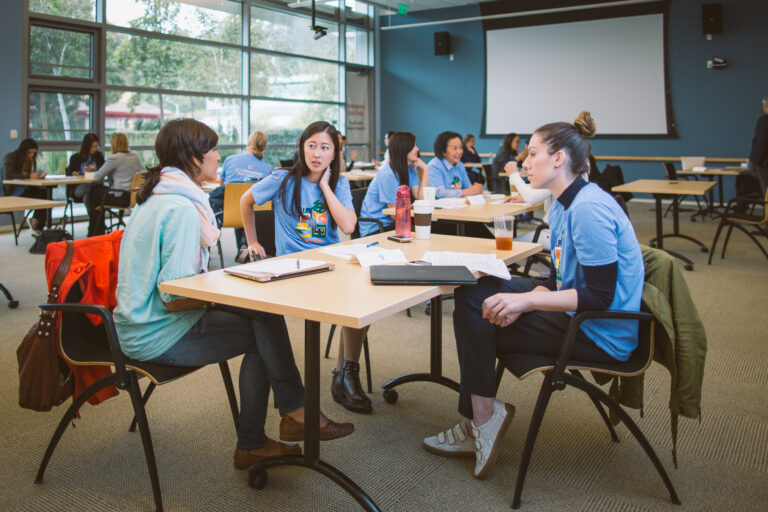by Joshua Elder
It’s all too common that equity, access, and inclusion in learning are seen exclusively as policy issues. But making learning an impactful experience for as many students as possible is much more nuanced than that, and has many component factors – including design.
For the second time this year, I joined Reimagine America’s Schools to co-moderate a panel discussion on topics relevant to building learning environments of the future. This time around, the panel was focused on the considerations that designers and school administrators need to keep in mind in order to build for equity and inclusion. The conversation covered a lot of ground, and the panelists drew on their expertise as architects, designers, educators, administrators, and planners to share insights on everything from the difference between “hard and soft equity,” to strategies for ensuring meaningful community engagement.
We’ve compiled some of the key takeaways from our discussion below – I’m excited by the lessons from our discussion, and am looking forward to seeing how these insights can play out in practice!
A “learning environment” is much more than a school building
Learning happens in a wide variety of different contexts, and doesn’t stop the moment a student leaves the classroom. The widespread adoption of remote and blended learning during the COVID-19 pandemic has forced teachers and designers alike to consider a student’s experience as more multifaceted than ever before, and to rethink how we can create experiences that accommodate a broad range of different situations. It’s also an opportunity to think creatively about ways to engage students meaningfully beyond the traditional boundaries of a classroom. “Rethinking a school doesn’t require an altogether new built environment – let’s start thinking about learning environments as places where students connect and learn about themselves and each other, and go from there,” said Dan Foreman, Associate Director of Professional Learning for Verizon Innovative Learning Schools at Digital Promise.
Thinking about schools as community assets is a key step to resourcing them effectively
“When we say, ‘it’s OK that a school building is in complete disrepair,’ we’re really saying that we don’t care about the community around it,” said Imani Day, an Associate at Gensler and Adjunct Professor of Design at the University of Detroit Mercy. School buildings are more than just a place to house students during the day – they’re important centers of local social infrastructure that serve entire local communities. The condition of a school building is often an indicator of broader local economic trends, and it’s critically important that investments in healthy school buildings and learning environments start to be seen as investments in the wellbeing of the entire surrounding community.
Humility is a key skill for the designers and architects charged with creating tomorrow’s learning environments
There’s a tendency among designers and architects to come to individual projects with a preconceived vision of success. But often, the most effective interventions are informed by humility and a willingness to listen to voices from the community. “We need to learn to be humble – otherwise, our efforts to meaningfully engage with the community risk becoming about exerting control,” said Steven Bingler, founder and CEO of Concordia. “In order to design equitably and effectively, the designer needs to get their own personal understanding of equity in order. Designers need to think about how we learn, and how everyone else learns, too.” That means taking multiple experiences into account, and making a genuine effort to understand different perspectives from across the community at every stage of the design process.
Context is key to creating an inclusive and equitable learning environment
Patricia Joseph, a Designer at Cuningham Group Architecture, shared a few key questions that she and her team bear in mind when embarking on a project: “who are we designing for? Who’s going to be in our spaces? Who might be looking into our spaces? And who are we designing a space next to?” She described the importance of understanding the many different relationships between people who interact with a learning environment, and underscored the importance of trying to see a space from multiple perspectives. Creating equitable and inclusive learning environments, she said, is “very much rooted in the process of finding a solution for each group or each community or each school.” Understanding those individual contexts is an important part of making that happen effectively.

Joshua Elder is the Director of Grants Management at Siegel Family Endowment





